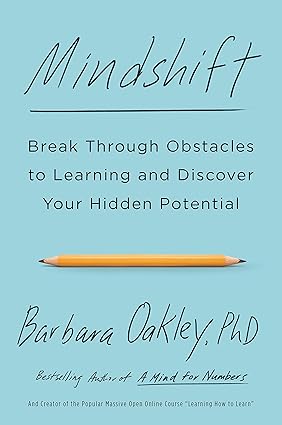More on this book
Community
Kindle Notes & Highlights
Read between
December 7 - December 25, 2017
It seems that exercise can kick-start a cascade of neurotransmitters, along with a host of other neural changes that can shift your mind when you’re trying to learn something new or think in different ways. What exercise does is set the scene to potentiate other changes in how your mind works. You can learn more effectively, in other words, if you’ve got an exercise program going on. This means, if you’re serious about making a mental shift in your life, it can be invaluable to incorporate exercise into the picture.
I think that what depression has taught me is that I need to listen to myself and take care of my own needs first. Today I choose me. Then out of my abundance I can care for other people, other living beings, and then things. The learning was long and painful, but it’s really quite simple. It’s all about the priorities of loving.
the key idea, much like the central idea of this book, is that, whatever you think you are, you are actually bigger than that. You can find a way to go beyond. And you can often get started—or even complete an entire career transition—by reinventing yourself through the constantly updated world of online materials.
Those with broad experience in the working world often observe that being forced to leave a job makes people far happier with the new job than the old—no matter how impossible this might initially seem.
Traditionally, careers have been stepping-stones where you lingered at each step. Modern careers, however, are more like conveyor belts. You have to keep moving and learning no matter what stage you’re at.
no matter what your first skill, you protect yourself by having some second skill—deeper than just a dabbling in another area. That second skill can either complement the first or give an alternative path if your personal situation changes. Implicit in Patrick’s approach is that we can all learn more than we might think.
especially if time and money are tight, you should try to build your second skill out of what you are already familiar with. You often have more talent and ability within you than you think. Second-skilling isn’t necessarily about a job—it’s also about respecting your multifaceted ability to be good at different things.
“This capacity for change is critical,” Gog notes, “because change is the only constant we will be seeing in the future—from technology to economy to social and political structures. Change is accelerating, and we need to build the capacity for change to continue to be relevant.”
“Careers define our identity in life,” observes Dr. Gog. At the same time, she understands that the traditional approach of just following your passion about what career you want to pursue isn’t enough. “Aspirations,” she notes, “must be matched with opportunity.”
“Education is never just about school. It’s about how to build up the ecosystem,” notes Dr. Gog. “We’re trying to ensure everybody has a pathway up.”
“If you want to be exceptional,” the instructor said, “you have to set goals that you cannot achieve with your current level of capability. You need goals that will make you stretch.”
Basically, it seems that chunking—those solid, well-connected neural patterns developed through practice and procedural fluency—really does seem to offload thinking processes from the working memory area (centered in the prefrontal cortex) to other parts of the brain. This leaves working memory with a lighter load, giving it space to handle new thoughts and concepts.
Break whatever you are learning into tiny chunks—a little part of a song on the piano, a word or verb conjugation in Spanish, a side kick in Tae Kwon Do, or a homework solution in trigonometry. Practice that chunk of material until you have created a solid “neural chunk”—a pattern that you can easily call to mind and accomplish. Once that chunk is mastered, however, don’t fall into the trap of repracticing it just because it’s easy and feels good—instead, keep the bulk of your focus and practice on what you find most difficult.
opportunities never arise looking like opportunities. They always come disguised as problems. It takes a certain kind of mind-set to turn problems, which we all encounter every day, into opportunities. “Lucky” people are those who see opportunities when others see problems.
One of Adam’s most powerful tricks is reframing. He makes a practice of seeing problems as opportunities—seeing how to transform a liability into an asset.
finding positive ways to think about a negative occurrence extinguishes negative emotions arising from the fight-or-flight center of the amygdala.
Steel-trap brilliance, in other words, can make it harder to teach others, especially if your steel-trap mind is coupled with a “doesn’t suffer fools gladly” mentality.
Working memory-related practice may give us stronger mental “muscles” for cognitively managing emotional stimuli. Since learning frequently entails exercises like those used to enhance working memory, this may help explain why adopting a learning lifestyle can just plain make us feel better.


